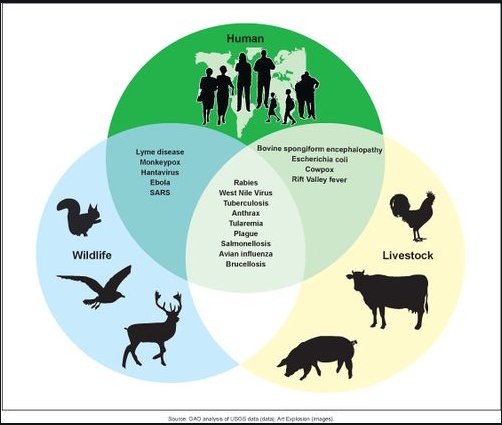Animal Health Research studies pathogens and diseases affecting free-ranging and captive animal populations. The group focus on addressing the importance of research needs in animal health relevant to management practices, diseases, and food security with significance to livestock and public health.
A) Zoonotic disease diversity in animal and environment Introduction
 Introduction:
Introduction:
Zoonotic disease (Zoonoses) is an infectious disease that is naturally transmitted between species from animals to humans (or from humans to animals) which normally caused by Viruses, bacteria, parasite, and fungi. There are three classes as follows: a) endemic zoonoses which are present in many places and affect many people and animals; b) epidemic zoonoses which are sporadic in temporal and spatial distribution; and c) emerging and re-emerging zoonoses which are newly appearing in a population or have existed previously but are rapidly increasing in incidence or geographical range. Zoonoses may appear suddenly and be relatively virulent.
 Pictures:
Pictures:

 For more further enquiries:
For more further enquiries:
Dr. Suhaili bin Mustafa
Senior Lecturer
Department of Animal Science and Fisheries
Faculty of Agricultural Science and Forestry
Tel: +6086 855375
Email: suhailimustafa@upm.edu.my
Updated:: 07/09/2020 [lanz]
MEDIA SHARING











 Introduction:
Introduction: Pictures:
Pictures:
 For more further enquiries:
For more further enquiries:


















